To the lecture series English top page
Comments on Lecture 5 "Circular Rectangle"
Comment 1. Figures to which a circle can change
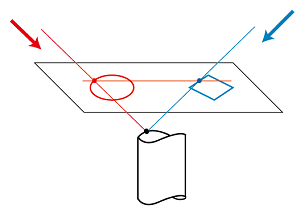 In order to be able to construct a space curve which fits the two desired 2D figures,
there should be a one-to-one correspondence between points on the two figures in such a way that the two lines, respectively, passing through the associated points and parallel to the associated view directions should have an intersection. A circle can be divided into a upper semicircle and a lower semicircle, and each semiciecle is monotone in the horizontal direction (in the direction from left to right). So the counterpart should also be partitioned at the leftmost point and the rightmost point into the upper and lower monotone curves. This is the condition for the figure to which the circle can change. Please refer to the nect reference for the detail.
In order to be able to construct a space curve which fits the two desired 2D figures,
there should be a one-to-one correspondence between points on the two figures in such a way that the two lines, respectively, passing through the associated points and parallel to the associated view directions should have an intersection. A circle can be divided into a upper semicircle and a lower semicircle, and each semiciecle is monotone in the horizontal direction (in the direction from left to right). So the counterpart should also be partitioned at the leftmost point and the rightmost point into the upper and lower monotone curves. This is the condition for the figure to which the circle can change. Please refer to the nect reference for the detail.
Comment 2. Reference on ambiguous objects that change the appearance in a mirror
K. Sugihara: Ambiguous cylinders: A new class of impossible objects. Computer Aided Drafting, Design and manufacturing, vol. 25, no. 3 (2015), pp. 19--25.
Comment 3. The "circular rectangle" got the second prize
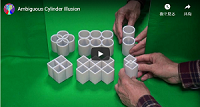
The "Curcular Rectangle" won the second prize at the
Best Illusion of the Year Contest 2016.
Comment 4. Paper-made circular rectangule
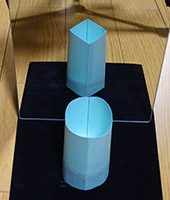
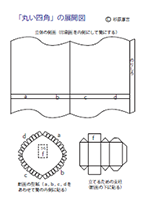
The diagram of unfolded surface of the "Circular Rectangle" is posted
here. From this diagram, we can construct a paper object of the "Circular Rectangle."
Comment 5. For those who want to touch the real objects
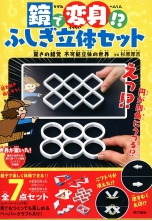
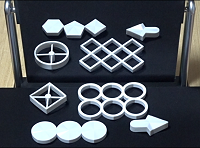
This book contains four plastic objects which change their appearances in a mirror.
Strange Object Set That Change in a Mirror (K. Sugihara, Tokyo Shoseki Publisher). See
here.
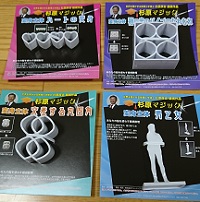
Four plastic models of ambiguous objects, including a variant of "Circular Rectangle" are sold from Four Season, Inc. See
here.
 In order to be able to construct a space curve which fits the two desired 2D figures,
there should be a one-to-one correspondence between points on the two figures in such a way that the two lines, respectively, passing through the associated points and parallel to the associated view directions should have an intersection. A circle can be divided into a upper semicircle and a lower semicircle, and each semiciecle is monotone in the horizontal direction (in the direction from left to right). So the counterpart should also be partitioned at the leftmost point and the rightmost point into the upper and lower monotone curves. This is the condition for the figure to which the circle can change. Please refer to the nect reference for the detail.
In order to be able to construct a space curve which fits the two desired 2D figures,
there should be a one-to-one correspondence between points on the two figures in such a way that the two lines, respectively, passing through the associated points and parallel to the associated view directions should have an intersection. A circle can be divided into a upper semicircle and a lower semicircle, and each semiciecle is monotone in the horizontal direction (in the direction from left to right). So the counterpart should also be partitioned at the leftmost point and the rightmost point into the upper and lower monotone curves. This is the condition for the figure to which the circle can change. Please refer to the nect reference for the detail.





